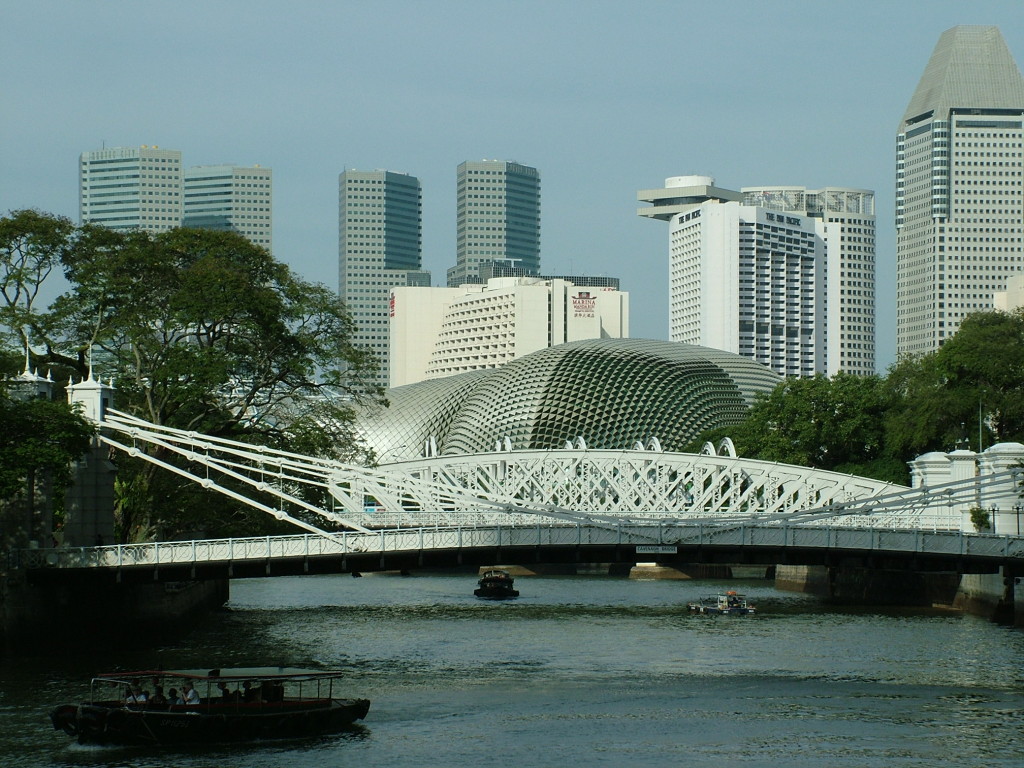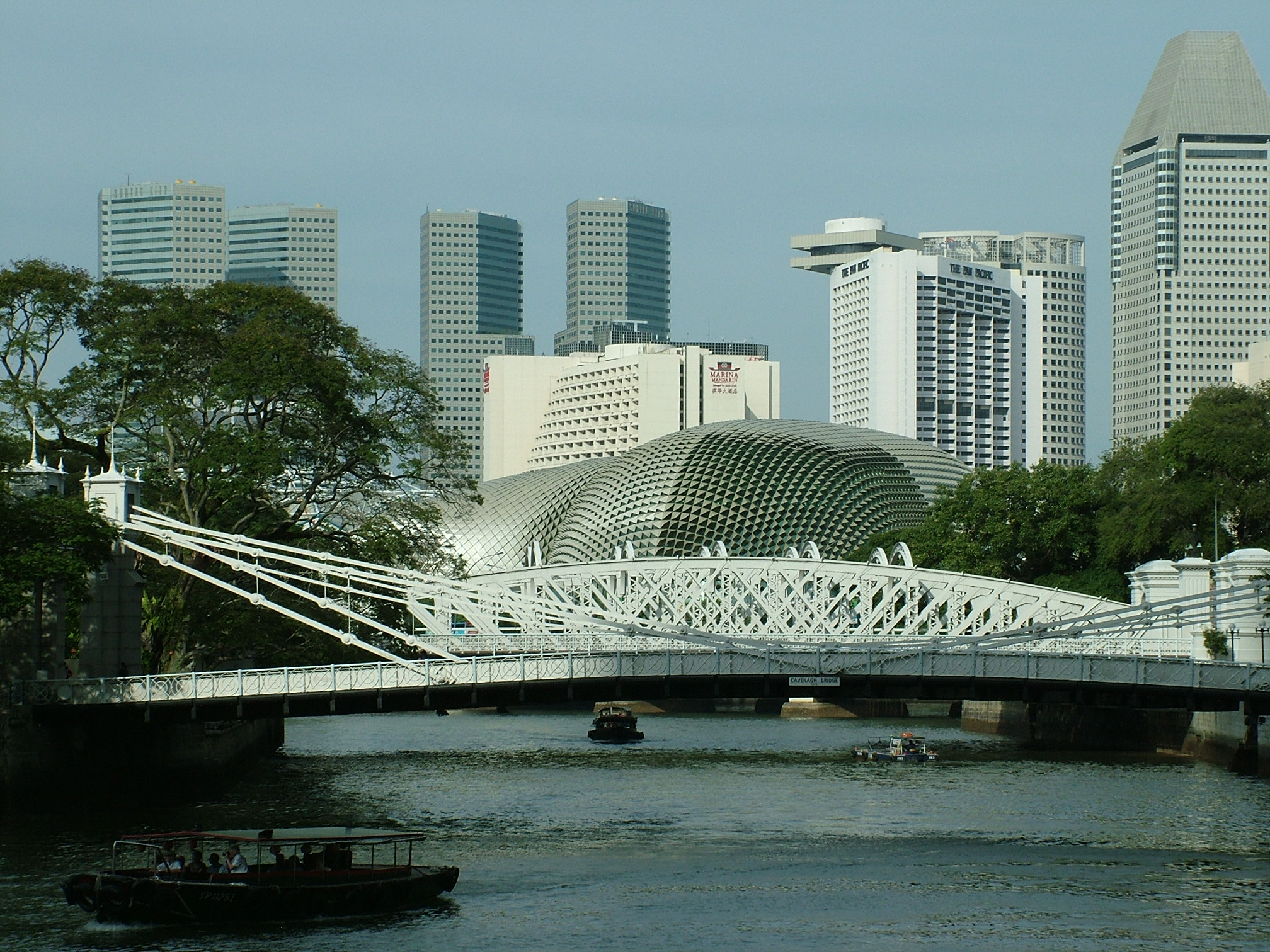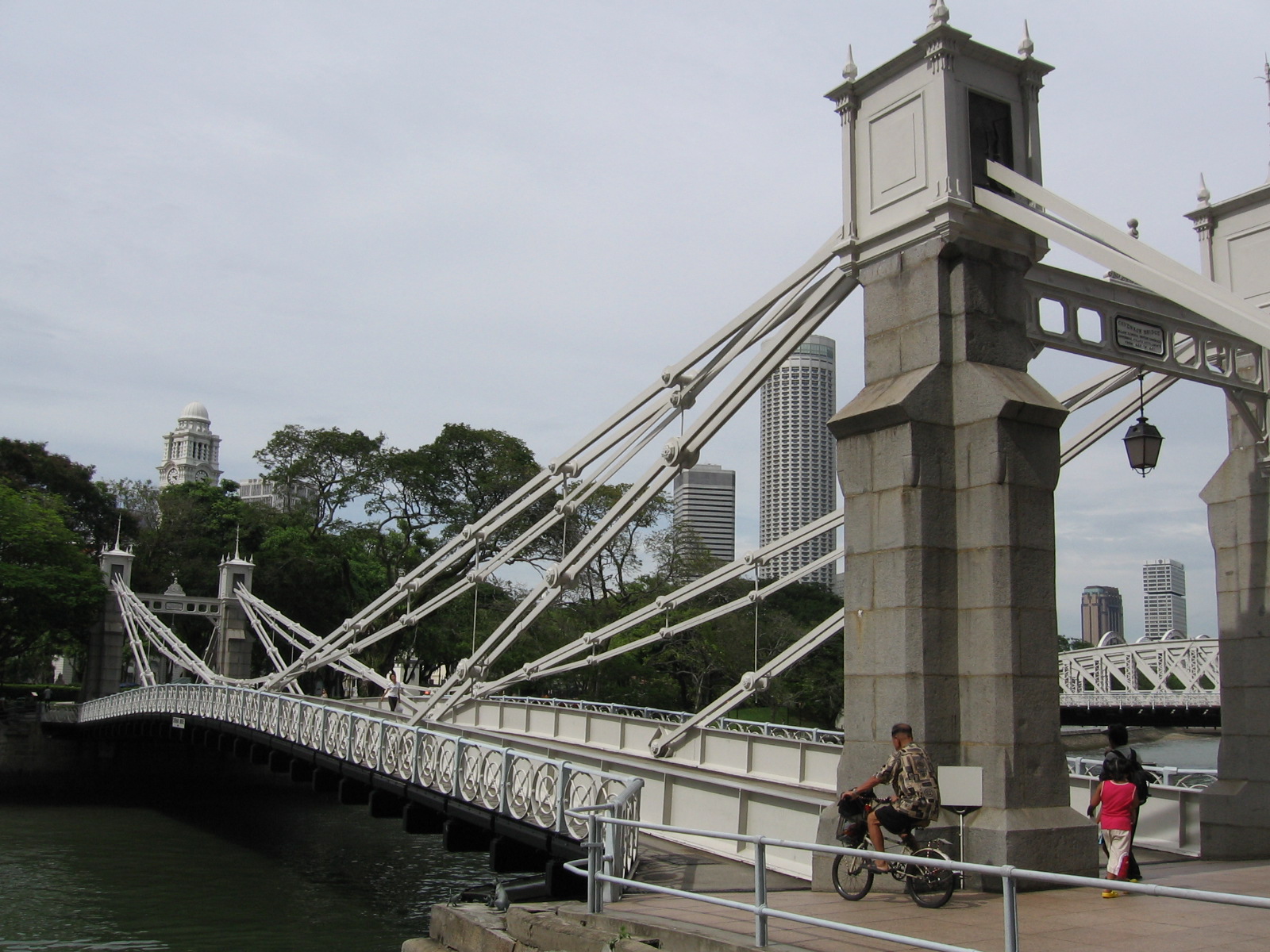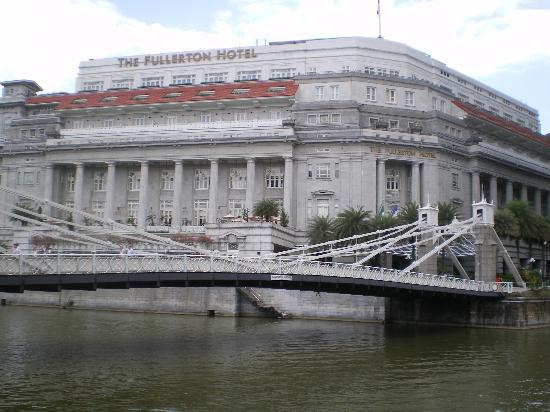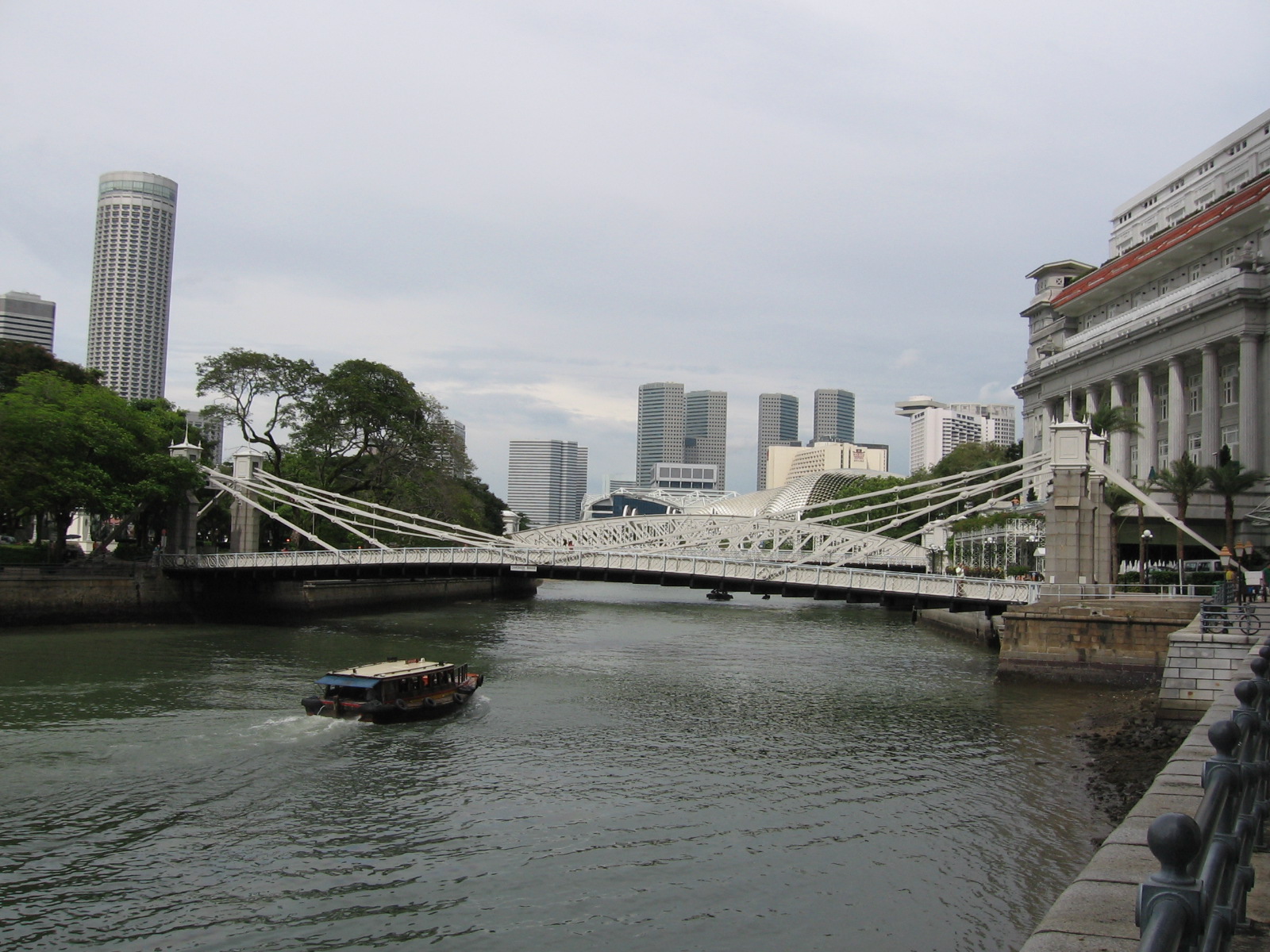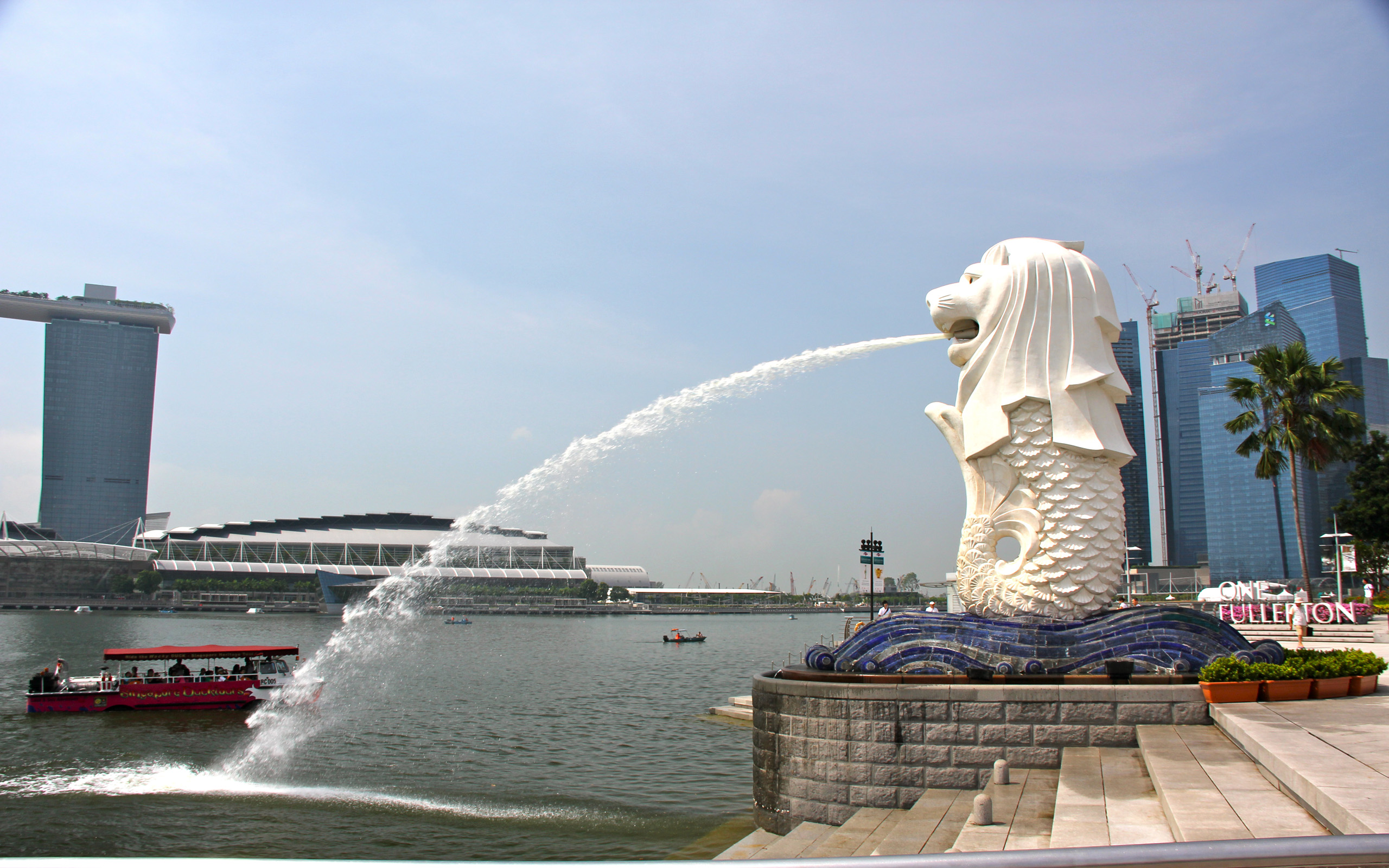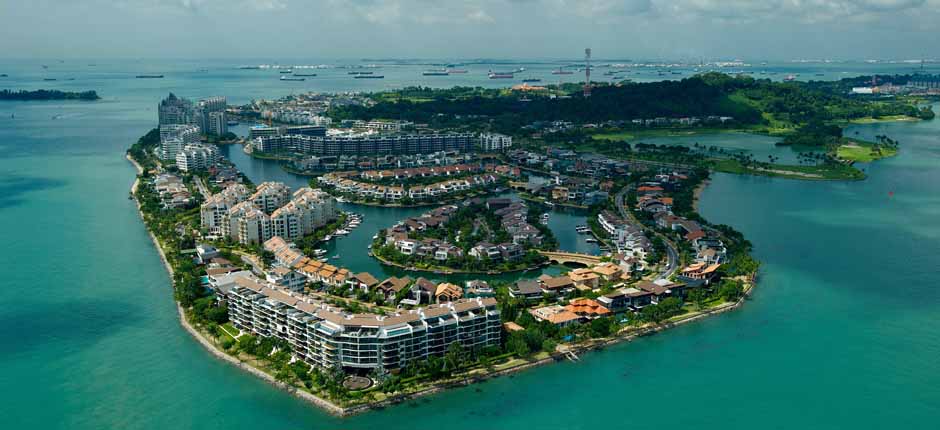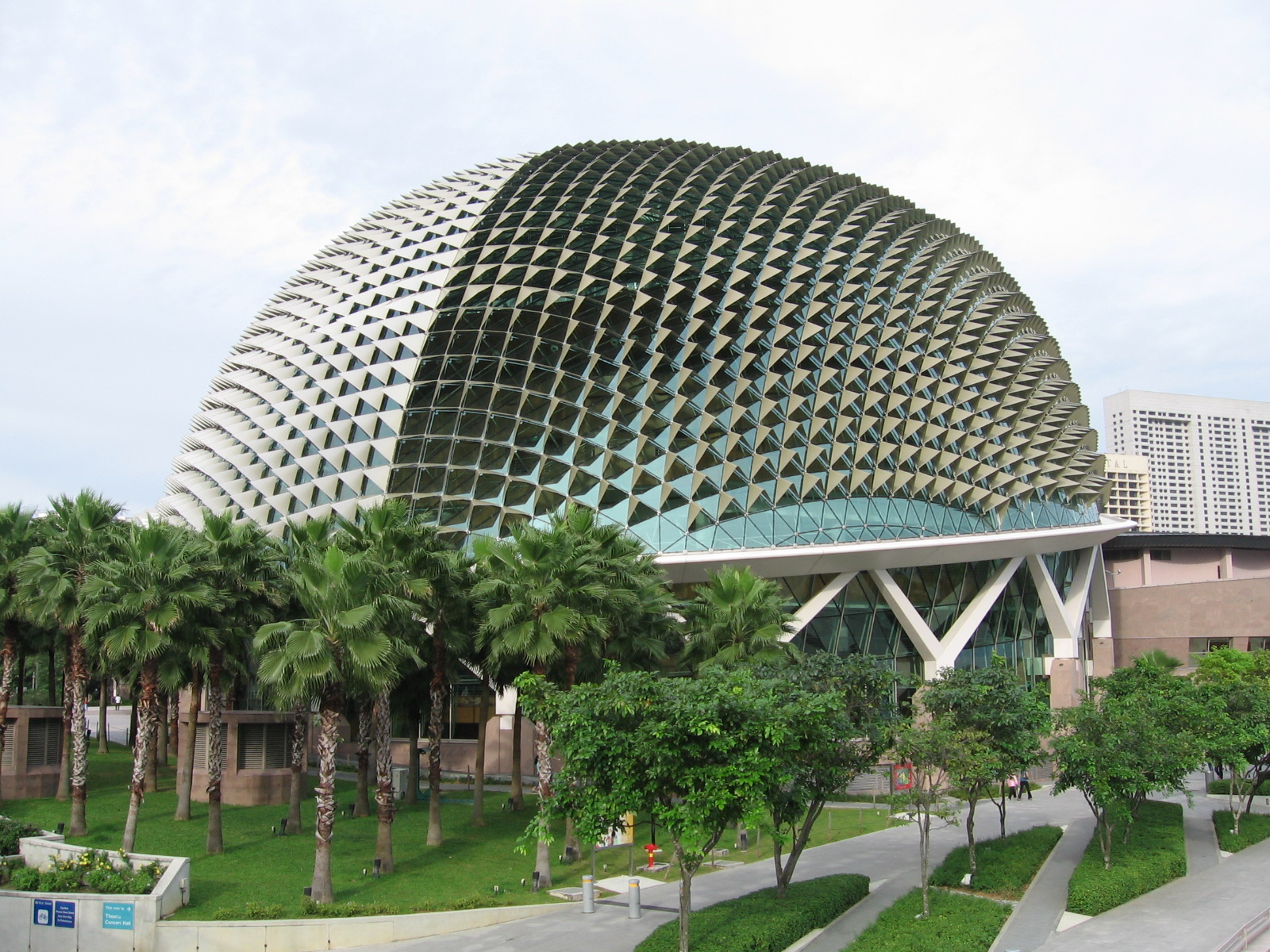Singapore /Singapore /Singapore
Sight Address : Connaught Dr,Cavenagh Bridge, Singapore.Edit
Detail InformationEdit
Cavenagh Bridge, a Singapore River crossing, located in Central Region. Named after Sir Lieutenant General William Orfeur Cavenagh, the last Governor of the Straits Settlements (1859 – 1867) under British India control. It was built in 1868 and is today the oldest bridge across the Singapore River. It was the last major work of the Indian convicts based in Singapore. Now it serves as a foot-bridge for pedestrian traffic only. Cavenagh Bridge was opened without ceremony. It was designed by Colonel G.C. Collyer, Chief Engineer of the Straits Settlements, with R.M. Ordish, of the Public Works Department, then under the charge of John Turnbull Thomson. Its steel structure was shipped out from Glasgow by P&W MacLellan, and constructed by these P&W MacLellan Engineers of Scotland of the Clutha Ironworks: the same company that had built the cast iron Telok Ayer Market. The Cavenagh family coat-of-arms can be seen on the cross-beams at both ends of the steel structure. The bridge linked Commercial Square (Raffles Place) and the government quarter, an essential alternative to get to the Post Office, replacing the ferry crossing which had cost a duit (“one cent”) per ride. Although Cavenagh Bridge had trams trundling across it, all heavy traffic was diverted to the Anderson Bridge when it was built in 1909. Cavenagh Bridge was declared off limits to ‘vehicles exceeding 3 cwts, cattle and horses’, then was converted into a pedestrian bridge. Unfortunately, the bridge had not been designed to make allowances for the tides and as late as 1983, the bumboats (tongkangs in Malay or twa-koh in Chinese) plowing the river had to wait for low tide before making their way under the bridge. In 1987, Cavenagh Bridge underwent a five-month refurbishment by the Public Works Department (PWD), to preserve and strengthen its structure. The restoration work cost a total of $1.2 million and the bridge was reopened on 3 July 1987. Today it is the oldest bridge across Singapore River.
HistoryEdit
In July 1856, there was a mere wooden foot-bridge where the Cavenagh Bridge now stands. In 1868, Cavenagh Bridge was built to commemorate the 50th Anniversary of the founding of the Crown Colony of the Straits Settlements held in 1869. It is named after Colonel Cavenagh, the last Governor of the Straits Settlements (1859 – 1867) under the Government of British India, although originally Governor Ord had planned for it to be named “Edinburgh Bridge” because it was first used during the visit of the Duke of Edinburgh to Singapore. Governor Ord eventually relented when members of the Singapore Legislative Council decided that it should honour and perpetuate the name of the last Governor appointed by the British East India Company to Singapore. Cavenagh Bridge was the last major project undertaken by Indian convict labour in 1869.Originally known as the Edinburgh Bridge to commemorate the visit of the Duke of Edinburgh, its name was changed to Cavenagh Bridge in honour of Major General William Orfeur Cavenagh, the last India-appointed Governor of the Straits Settlements, who governed from 1859 to 1867.The coat of arms of the Cavenagh family can still be seen atop the signage at both ends of the bridge.Cavenagh Bridge linked the Civic District on the northern bank to the Commercial District on the southern bank of the Singapore River. Before Cavenagh Bridge was constructed, people could only get to the two districts via a detour over Elgin Bridge or by paying 1 duit (¼ cent) for a boat ride across the river.
Must SeeEdit
Popular
Visiting TimeEdit
Open 24 hrs
Closed OnEdit
N.A.
Best Season to VisitEdit
June to July and November to December.
Best Time To VisitEdit
N.A.
Time Required for SightseeingEdit
N.A.
Ticket Required : No Edit
Individual National Adult : N.A.
Kids : N.A.
Individual Foreigner Adult : N.A.
Kids : N.A.
Still Photo Camera : N.A.
Video Camera : N.A.
Guide Required : No Edit
Approximate cost: N.A.
Dress Code (If Any) : No Edit
Dress Require: N.A.
Restaurants NearbyAdd / Edit
- Maharajah Boat Quay ; 41 Boat Quay Singapore 049830 ; Ph/M – 65 6535 0122 ; Food Serve – Indian Restaurant.
How to ReachEdit
Taxi : Taxis are generally very hard to get during peak hours (Mon-Fri 7:00am – 9:30am and Mon-Sat 5:00pm – 8:00pm) and on rainy days. If you are at a hotel, have conceirge call you a taxi. If you are out about town and have access to a cell phone- calling for a taxi will cut your wait time by 20 to 30 minutes. All taxis are fitted with meters; all are air conditioned; the majority of the taxis are 5-seaters; about 90% of taxis have radiophones; call booking is done via GPS or digital voice dispatch. All passengers must fasten their seat belts by law.
For taxi Booking fee is SGD $2.3. Minimum fare for taxi is SGD $3 for first 1Km. Fare above minimum fare until 10Km is SGD $0.55 per Km. Fare above 10Km is charge SGD $0.628 per Km. Taxi Waiting charges per hour is SGD $17.6. Peak Hours charges is diffrent.
Bus : Public buses run daily from 5.30am to midnight. Extended night services cost slightly more (a flat rate ranging from $1.50-$3.00). Otherwise, most fares depend on distance travelled and range from 67 cents to $1.58 for air-conditioned comfort (almost all public buses in Singapore have air-conditioning today). There are also “feeder” bus services that charge a flat rate of 67 cents. Each bus should not take more than 15 to 20 minutes to arrive at the bus stop.
Train : Singapore MRT system is very well connected to different parts of Singapore and very clean! If you have the time and plan to explore around little Sunny island, get the the Singapore Tourist Pass!
It runs 6am-12mn, fares start at S$1 (70cents in EZ link). Tickets can be purchased in all MRT stations. You just have to insert your money through the ticket machine. Rush hour’s usually 7am-9am, 11am-2pm and 4pm-7pm.
Air : Changi Airport is the country’s main airport. From the airport there are a number of ways to get into the city:
Taxi is easiest – simply follow the signs after clearing customs. Meters are always used in Singapore and prices are reasonable. A trip to the city during the day will be between $20-$30 including $3-5 airport surcharge. An additional 50% surcharge applies between midnight and 06:00.
Limousines charge a flat $50 to anywhere in the city and are a pretty good deal after midnight, as you can skip the queue and avoid the surcharge. The same pricing applies to chartering van-sized MaxiCabs, which are good for large families or if you have lots of baggage.
Shuttle – Shared six-seater MaxiCab shuttle service to designated areas/hotels costs $7 and can be booked in advance or in the arrivals hall. 6AM-2AM, every 15-30 min.
Subway – MRT trains run from a station between T2 and T3, but you’ll need to change trains at Tanah Merah to a city-bound train: just exit through the left hand side door and cross the platform. The 30 min ride to City Hall station costs $1.90 plus a refundable $1 deposit, and trains run 05:31-23:18.
Bus – Bus terminals can be found in the basements of T1, T2 and T3. 06:00-23:59 only. Fares are less than $2.00, exact fare required (no change given) if you pay cash.
Others : N.A.
Things to CarryEdit
Safety / WarningEdit
- Please be advised that all bags and personal items are subject to inspection.
HelplineEdit
- Police: 999
- Emergencies/Ambulance/Fire Brigade: 999
- Police Hotline: 1800 353 0000
- Non-emergency ambulance: 1777
- Flight Information (24-hours): 1800-542 4422
- Tourism Information (24-hours): 1800-736 2000
